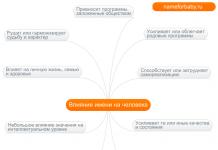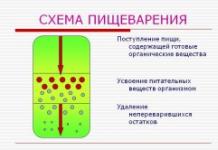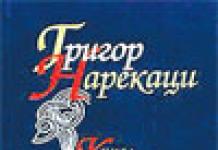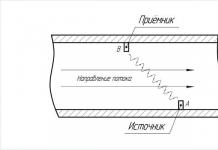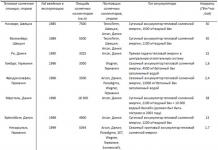In the representation of a linguistic personality, according to Yu. N. Karaulov, three levels are distinguished:
The zero level is verbal-semantic (or structural-systemic);
The first level is cognitive (or thesaurus);
The second level is motivational (or pragmatic).
The verbal-semantic level reflects the degree of proficiency in an ordinary language, where words are the main units, and the relationships between them are expressed in various grammatical, paradigmatic and syntactic links. The zero level is represented by stereotypes: standard words, phrases, simple formulaic phrases: "go to the cinema", "learn lessons", etc.
The linguo-cognitive level is characterized by the fact that the units are various concepts, ideas and concepts that are expressed using zero-level words; relationships are built into an ordered hierarchical system that reflects the structure of the world. Stereotypes are stable standard connections between concepts, which are expressed in generalized statements, winged expressions, aphorisms. From their variety, a linguistic personality chooses those that correspond to the connections between concepts in its thesaurus - this is reflected in the use of favorite colloquial formulas and individual speech turns, by which we often recognize famous person. It can be stated that a linguistic personality is able to show its individuality only starting from the first, linguo-cognitive level. It is at this level that individual choice, personal preference, is possible. Individuality can manifest itself in the ways of hierarchization of concepts, their connection when building one's own conclusions. This level involves the reflection of the language model of the personality's world, its thesaurus, culture.
The highest pragmatic level of the structure of a linguistic personality is represented by the communicative and activity needs of the personality (the need to speak out, to receive information). The relations between these units form the so-called communicative network (the sphere of communication, the situation, the roles of interlocutors). The stereotype here must meet the communicative needs. The motivational level includes the identification, characterization of motives and goals that drive the development of the individual.
The motivational level goes beyond the scope of linguistics, however, it is at this level that the features of a linguistic personality are most visible. "This is the sphere of moral intentions, motives and needs, the sphere of desires, interests and aspirations."
It should be noted that the allocation of levels in the structure of a linguistic personality is very conditional. AT real life interpenetration and interdependence of levels is observed.
Considering a particular human linguistic personality, V. P. Neroznak distinguishes its two main types: 1) a standard linguistic personality, reflecting the average literary processed norm of the language, and 2) a non-standard linguistic personality, which combines the "tops" and "bottoms" of the culture of the language. The researcher refers writers, masters of artistic speech to the top of culture. A creative linguistic personality is considered in its two guises - "archaists" and "innovators". The lower levels of culture unite the bearers, producers and users of a marginal language culture (anti-culture). The author considers non-standard vocabulary - slang, slang, jargon and obscene words and expressions as an indicator of the speaker's belonging to the linguistic marginals.
V. I. Karasik notes that "creativity is important characteristic language personality", but you can get "a more complete picture of non-standard linguistic personalities if you turn to the study of the speech of not only writers, but also scientists, journalists, teachers".
ContentIntroduction
1 .
1.1 Dichotomy language / speech F.de Saussure
1.2 The study of speech in modern linguistics
2. The concept of language and speech personalities
3. Speech portrait as a form of linguistic research
4.2 Thesaurus of Russian and English lyceum students
Conclusion
Bibliography
Attachment 1
Annex 2
Introduction
This study is devoted to the problem of a comparative study of the generalized speech personalities of a Russian and an English lyceum student.
Relevance of this study due to both linguistic and extralinguistic factors: 1) the development of various new forms and varieties of medium educational institutions, such as lyceums, for example, is the cause of some "stratification" of the social and age category of schoolchildren - lyceum students, gymnasium students, students of ordinary secondary schools, colleges differ from each other not only in their behavior, but also in their manner of communication; 2) the features of the speech behavior of lyceum students have not been sufficiently studied, although such knowledge is necessary for successful communication and educational work with this category of students; 3) the expansion of the boundaries of international communication gives rise to the need to study the characteristics of the speech behavior of Russian and English lyceum students in order to reduce the risk of communication failures.
Research novelty consists in the fact that, as our analysis of modern linguistic literature shows, the attention of researchers is mainly focused on studying the characteristics of the speech personalities of Russian schoolchildren in grades 5-7 of secondary schools, or students, and the characteristics of the speech behavior of lyceum students have not been analyzed. Thus, for the first time, the object of linguistic analysis in a comparative aspect is the features of the speech behavior of Russian and English lyceum students.
Object of study - speech personalities of Russian and English schoolchildren. Subject of study - features of the speech personalities of Russian and English lyceum students at the verbal-semantic, cognitive and pragmatic levels.
Targetcourse work - to reveal the features of the lexicon, thesaurus and pragmaticon of speech personalities of Russian and English lyceum students. The goal is to solve the following tasks:
1) consider the content of the linguistic terms "language" and "speech";
2) to generalize the understanding in linguistics of the phenomena "linguistic personality" and "linguistic personality";
3) analyze current research various kinds speech portraits;
4) to identify the features of the generalized speech personalities of Russian and English lyceum students;
5) compare the identified features.
Material: interviews, recordings of conversations, materials of direct observations of Russian lyceum students, fragments of the English feature film by Peter Weir "Dead Poets Society"
Methods: d To solve the tasks set, the work uses a descriptive method (namely: observation, interpretation, generalization), as well as questioning, interviewing, statistical analysis methods, and contextual analysis methods.
1 . The content of the terms "language" and "speech"
1.1 Dichotomy language / speech F. de Saussure
For Saussure (Saussure 1998), three concepts are correlated: speech activity, language and speech. Saussure's definition of "speech activity" is the least clear. “In our opinion, the concept of language does not coincide with the concept of speech activity in general; language is only a certain part, the truth is the most important, of speech activity"
“Speech” is also determined from the relationship with language, but more specifically: “... speech is an individual act of the will of understanding, in which it is necessary to distinguish: 1) combinations with which the speaking subject uses the language code in order to express his personal thought; 2) a psychophysical mechanism that allows him to objectify these combinations”; Saussure defines “language” most fully and definitely: “language ... is a system of signs in which the only essential thing is the combination of meaning and acoustic image, and both of these elements of the sign are equally mental.”
1.2 The study of speech in modern linguistics
Discourse analysis is a modern direction of linguistic research. The concept of discourse has many definitions: 1) a coherent text; 2) oral-colloquial form of the text; 3) dialogue; 4) a group of statements related to each other in meaning; 5) a speech work as a given - written or oral ”(Nikolaeva 1978); 6) the equivalent of the concept of “speech” in the Saussurean sense, i.e. any particular utterance; 7) within the framework of theories of utterance or pragmatics, “discourse” refers to the impact of the utterance on its recipient and its introduction into the “utterance” situation (which implies the subject of the utterance, the addressee, the moment and the specific place of the utterance) (Serio 2001).
One of the objects of study of modern linguistics is various speech genres of communication. One of these genres is urban communication (Kitaigorodskaya, Rozanova 1996). The radical political and socio-economic transformations that have taken place in recent years have significantly affected the structure and nature of urban communication.
Engaged in the study of speech and psycholinguistics (Frumkina 2000). One of the main objects of its study is colloquial speech - spontaneous, unconstrained oral speech of educated speakers of the modern Russian literary language. The most important thing is that RR is considered as a special, separate language system.
After analyzing the theoretical literature, we can conclude that the phenomenon of speech as an individual, situational and, at the same time, verbally, aspect of communication is in the focus of attention of modern linguists.
2 . The concept of language and speech personalities
In linguistics, individual aspects of language use have been summarized in terms of speech personality ( Krasnykh 1998) is a person who realizes himself in communication, choosing and implementing one or another strategy and tactics of communication, choosing and using this or that repertoire of means (both linguistic and extralinguistic), communicative personality- a specific participant in a specific act, actually acting in real communication, and languagesoh personality(Karaulov 1989) - a person who manifests himself in speech activity, possessing a certain set of knowledge and ideas.
A number of scientists (M.V. Kitaygorodskaya and N.N. Rozanova) believe that “a functional model of a linguistic personality (i.e. its speech portrait)” should include the following three levels:
1) The lexicon of a linguistic personality is a level that reflects a person's possession of the lexical and grammatical fund of the language. That is, when creating a speech portrait of a given level of a linguistic personality, it is necessary to analyze the vocabulary and phrases used by a particular linguistic personality.
2) Thesaurus of a linguistic personality is a linguistic picture of the world, which, when describing a speech portrait of this level, is reflected in the use of favorite colloquial formulas, speech turns, special vocabulary, by which we recognize a person.
3) The pragmaticon of a linguistic personality is a system of communicative roles, motives, goals, intentions that guide the personality in the process of communication.
Based on this functional model, we will attempt to describe the speech portrait of English and Russian lyceum students.
3 . Speech portrait as a form of linguistic research
The creation of speech portraits is a fairly new direction in linguistic research. However, over the past few years, linguists have created an extensive gallery of such portraits of various speech / language personalities.
Rspeech portraits represent a certain individual set of speech signals of hidden influence strategies (Matveeva 2003). At the same time, each text sender has its own unique and inimitable set of speech signals. This set of signals is inherent in a particular person and represents his individual speech experience. The interpretation of even fragments of speech portraits of various types allows us to diagnose the individual qualities of the authors that have developed in them as a result of socially and psychologically conditioned speech experience, and which in each case are determined by specific situational conditions and are limited by the scope of speech genres.
The basic principles of creating and describing a holistic speech portrait are based on a comprehensive analysis of various aspects of his linguistic personality: linguistic, speech, age, social, psychological. It is the collective speech portrait that makes it possible to synthesize individual speech portraits and various types of group speech portraits. A holistic speech portrait of a linguistic personality can only be given detailed description her speech and speech behavior over a significant time period. This is practically not feasible, therefore, research searches in studying the problem of a linguistic personality and creating its speech portrait are aimed at such moments of speech behavior that carry essential (typical) features that can become parameters for creating a typology of linguistic personalities.
The speech portrait of various linguistic personalities (individual and collective) has repeatedly become the subject of linguistic research.
So, for example, S.V. Mamaeva (Mamaeva 2007), considering the speech portrait of a schoolchild in grades 5-7, found that the verb, in comparison with other parts of speech, has the most developed system of categories and forms. Apparently, this fact is one of the reasons for the frequency of the use of the verb in the speech of schoolchildren. A small number of adjectives in the oral statements of schoolchildren in grades 5-7 (in comparison with other parts of speech) is associated with a fairly large number of pronouns they use in speech.
V.D. Chernyak (Chernyak 2007), describing the speech portrait of a contemporary, revealed that the language preferences of a modern linguistic personality are associated with the psychological status of the word, with its perception. The keywords of the titles of the most "popular" genre - the detective - are clearly correlated with the conceptual fields that are relevant for the corresponding genre. Such, for example, are the names of detectives: "Death", "The name is death", "In bed with death", etc.
L.V. Sretenskaya, N. Turgen, studied the communicative speech self-portrait of the Finns (Sretenskaya, Turgen 2007.), and M.V. Koltunov studied the speech portraits of American and Russian managers (Koltunov 2007).
S.V. Leorda (Leorda 2007), while describing the speech portrait of a Russian student, came to the conclusion that a feature of the written form of communication between modern students is correspondence on various surfaces (tables in educational buildings, walls of toilets and educational buildings). Graffiti of this kind testifies to many things: about the priorities in the life of modern students, about their attitude to life, teachers and to each other. In the opinion of the researcher, this tradition should disappear, because very often such inscriptions are evidence of a person's low general culture, offending the aesthetic feelings of others.
Thus, we saw that the speech portrait was actively studied in linguistics. But it should be noted that the comparative speech portrait of the American and Russian lyceum student has not been studied.
4. Comparative analysis of speech portraits of Russian and English lyceum students
4.1 Lexicon of Russian and English lyceum students
As the analysis of the interviews we took with students of Lyceum No. 104 in Novokuznetsk, as well as observations of their speech behavior, shows, the thematic range of vocabulary actively used by lyceum students is quite wide. The following dominant lexical groups of words can be noted: feelings, personality and society, creativity, friends, interests and hobbies, future, opposite sex, studies, sports. The most numerous lexico-semantic group is the "Personality and Society" group, which is represented by the following language units: question, meaning, person, truth, image, veins, company, rag, pride,life, people, color, goal, means, lies, benefits, joke, understanding, sides, mirror, mood, occasion, religion, answer, say, relate, express, like, feel, cut, behave, humiliate, think, ask , want, be, need, complex, double, bad, each, important, stupid, extremely, negative, especially, in general, me, me, myself, you, they.
From the point of view of grammatical categories, it should be noted that in the speech of Russian lyceum students, in terms of frequency of use, the leader is such a morphological category of words as verbs, the number of which in each lexico-semantic group is several units higher than the number of nouns and adverbs, which rank second in terms of frequency of use. The least frequent morphological classes of words are adjectives and pronouns.
The grammatical category of time in the speech of Russian lyceum students is most often realized through the future and present tenses (Ex. 1):
(1) Think ... well, how ... I don’t know ... now, anyway, the main problem is still at the expense of love and friendship,we will become grown up is still the main planwill be another question ... although still problemswill The same.
As for the category of mood, the most common is the indicative mood (ex. 1) and the subjunctive (ex. 2):
(2) I used towould answer whatwould have honored a book, but now ... take a walk!
The syntactic features are that elliptic constructions (ex. 3), incomplete sentences (ex. 4) and anakulufa phenomena are frequent, i.e. violation of the order of the started syntactic construction for the transition to another, and as a result - a non-normative, hybrid construction (Ex. 5):
(3) Friends - many, few best;
(4) That's how, mutual respect here, I don't know, I still feel...;
(5) Does inspiration happen?
Yes, but usually then I feel sad ... .. well, not sad, but dreamy, more ...
As the analysis of the speech behavior of English lyceum students (based on the feature film "Society of Dead Poets") shows, the range of lexical-semantic groups used by them is narrower than that of Russian lyceum students. The following groups can be distinguished: study and life of the lyceum, feelings, social relations. The most numerous is the group "study and life of the lyceum": group, school, specialty, roommate, trig, seat,activities, semester, guys, to study, to know, to listen, to think, to ask, new. The smallest group is “feelings/social relations”: bootlicking, fault. However, it is important to note the abundance of various interjections in the speech of English lyceum students, which is not typical for Russian lyceum students: Oh, hey, Yeah, Sure, Oops, Huh, Yep, Ok, um, Oh, wow.
2) the widespread use of specific vocabulary to refer to everyday events and things, formed from the commonly used normative lexical units of the Russian literary language, or with the help of abbreviation ( lit-ra, physical-ra), or by adding specific colloquial suffixes ( canteen, classroom, teacher), or by way of metaphorical rethinking and indirect nomination ( botanist"excellent student"), or through the reception of sound rapprochement (schizo (physics))
3) the nominations of people used reflect different situations of social communication: Sir (appeal to a person with a higher, dominant social status) ; gentlemen ( addressing males present in a situation of business or official communication) ; guys, boys(appeal to interlocutors with equal social status in a situation of informal friendly communication);
4) rather rare use of nicknames ( stiff; genius) ;
5) the use of foreign words, slang, computer terms is not noted;
7) the absence of famous quotes from films, books.
4.3 Pragmaticon of Russian and English lyceum students
In linguistics, there is the concept of a communicative role - the dominant functions performed by a given speech personality in the process of communication (Issers 1996). There are several types of communicative roles (staff): "WATCHMAN" is the person who controls the flow of messages in social group; "CONNECTED"- one who connects two or more groups in the system on an interpersonal basis, is at the intersection of information flows circulating between groups; "OPINION LEADER"- this is a person whose judgments and assessments are listened to by colleagues, whose opinion is authoritative for decision-making, they have more frequent communication with competent sources of information, and they are accessible to group members and are more committed to group values; "COSMOPOLITAN"- this is a person who, more often than other members of the organization, is in contact with the external environment, he is a supplier of fresh ideas. The basis for attributing the communicative behavior of a speech personality to a particular communicative role is the analysis of the most frequent communication strategies.
Having examined the speech portraits of an English and a Russian lyceum student, we came to the conclusion that in the communication of lyceum students some of the above communicative roles are realized, as well as some of the roles that we have identified independently.
So, in the speech communication of Russian lyceum students, such communicative roles as "THINKER" - a person who expresses his opinion without imposing it on others; reflecting on life and having his own views on any things (…Well, love, like, it's a big, big feeling. That's how, mutual respect…); "ROMANTIC" - one who sees things through, etc....................
CHAPTER 1. LANGUAGE PERSONALITY AND INTERTEXTUAL
THESAURUS IN THE MODERN SCIENTIFIC CONTEXT.
1.1. Linguistic personality as an object of study
1.1.1. Cognitive structures of the linguistic personality and the precedent phenomenon.211.1.2. Precedent phenomenon and stereotype.
1.1.3. Competence. Pragmatic component in the structure of linguistic personality.
1.2. Intertextual thesaurus and intertextual competence.
1.2.1. On the definition of the term intertextual thesaurus. Intertextual Thesaurus and Speech Culture of a Linguistic Personality
1.2.2. Intertextual thesaurus and intertextual competence of a native speaker.
1.2.3. The structure of the intertextual thesaurus.
CONCLUSIONS TO CHAPTER 1.
CHAPTER 2. RECONSTRUCTION OF THE INTERTEXTUAL THESAURUS OF THE MEDIA LITERARY TYPE OF SPEECH CULTURE.
2.1. The composition of the IT thesaurus and the features of the functioning of citations in media texts.
2.1.1. Classification of intertextual signs according to the source text.
2.1.2. Features of the functioning of intertextual signs.
2.2. The composition of the IT thesaurus and the features of the functioning of citations in the texts of KVN.
2.2.1. Classification of intertextual signs according to the source text
2.2.2. Features of the functioning of intertextual signs.
CONCLUSIONS TO CHAPTER 2.
CHAPTER 3. RECONSTRUCTION OF THE INTERTEXTUAL THESAURUS OF THE MEDIA OF THE ELITE TYPE OF SPEECH CULTURE.
3.1. Classification of intertextual signs according to the source text.
3.2. Features of the functioning of intertextual signs in the game discourse.
L. A. Dolbunova
The globalization of the information space has put the problem of intercultural communication at the center of attention of specialists in various scientific fields (linguists, sociologists, psychologists, culturologists). Intercultural communication can be understood as "communication of carriers different cultures”, verbalized in different languages.
The effectiveness of communication depends, first of all, on the general fund of knowledge of communicants. The knowledge fund, or thesaurus (defined by I. V. Arnold as “memory content”), includes a set of concepts (conceptual structures) of various levels: linguistic, mental, cultural. The core of the thesaurus is made up of national-cultural concepts expressed in the specifics of the content and forms of the national language.
In the field of philology, intercultural communication is reduced to the dialogic of texts from different cultures, a special case of which is translation. “The very concept of the interaction of cultures, texts as substitutes for cultures, suggests the presence of common elements and inconsistencies that allow us to distinguish one cultural and linguistic formation from another (one linguistic and cultural community from another)” . To achieve mutual understanding, it is necessary that the communicants (author and translator) have a common knowledge about the language used, about the world in the form of images of consciousness, i.e., have a common cognitive base. The latter is formed by invariant images of consciousness with respect to certain phenomena, allowing the linguistic personality to navigate in the space of a particular national culture. At the same time, on the periphery of the cognitive space there are individual concepts that develop in a linguistic personality in the course of its life experience. This part of the cognitive space is more dynamic and associative.
Naturally, the center of the structure of a linguistic personality is the features of its national character, emotional make-up, thinking, and speech behavior. However, failures in communication occur not only in the sphere of national-specific, but also in the individual (subjective-author's) content of the text and its individual perception based on the cognitive structures of the translator's linguistic personality. In linguistics, the concept of “ethnopsycholinguistic type” of a communicant has been introduced, which includes the above factors: “The personality of a communicator determines his speech behavior, perception and interpretation of the statements of the interlocutor, it is the personality as the subject of discourse that gives a certain illocutionary force to the speech act and speech course” . It is the ethnopsycholinguistic type of the communicant that explains the peculiarities of the perception and generation of the text. Having one source text of the original (TO), we will get different translated texts (TP) of different linguistic personalities-translators. When translating a foreign language text, the national-individual cognitive spaces of the author and the translator must coincide to some extent. Their coincidence is due to the anthropocentric properties of the language, the universality of human thinking, that is, the presence of universal conceptual categories. Greater combination of these spaces gives a greater "percentage" of approaching the understanding of the author's intention and content of TO. The translator, as a co-author of the text, needs to freely navigate in the space of the author's national-cultural-cognitive base. It is an indisputable fact that the perception of a different culture (and text) occurs through the prism mother tongue and culture, since the translator, no matter how deep knowledge of another culture he possesses, remains a representative of his “own” culture. Moreover, the purpose of translation is not only to convey the intention of the author of the text to the addressee, who speaks only his native language, but also to inform him about the concepts of another culture, thereby forming his involvement in world culture, where the translator has a prominent place.
National-specific concepts create gaps in translation, which are compensated by the concepts of the native language and culture. Namely, such gaps present special difficulties and lead to inevitable losses, since translation is, first of all, the translation of cultural concepts from one language to another. An adequate translation with absolute accuracy in conveying the volume of meanings is impossible due to the deep difference between cultures and languages. As the great Humboldt said, one cannot fully comprehend the “spirit of the people”, its language.
The two texts (TO and TP) should become as interchangeable as possible. As for the translation of a literary text, the semantic and stylistic levels of the two texts must first of all be correlated in the translation, since they form the aesthetic value of the work. In general, the translation should be "perceived as an original work in "one's own" language, and at the same time be a work of a "foreign"" . Approximation to the original gives not only knowledge of the language and culture, but also knowledge of the extralinguistic factors behind the literary text - knowledge of the linguistic personality of the author: his thesaurus, features of the worldview, style, era.
Assuming creative co-authorship, translation, however, is given by the original, its author. Because of this, the translator needs to have a comprehensive cultural and linguistic base, both in receptive and productive terms in both languages. An extensive cognitive base affects the translator's ability to infer the meanings of TO, the ability to project the cognitive base onto TO. This means that translation is comparatively dynamic in nature.
Thus, the process of literary translation acts as a desire to understand another culture, and since semantics is the cultural richness of concepts in different languages different, then literary translation is a subjective interpretation of the text, close to the original; interpretation, depending on the amount of combination of the cognitive bases of the native and target languages in the mind of the translator's linguistic personality.
Literature
1. Tarasov E. F. Intercultural communication - a new ontology for the analysis of linguistic consciousness. // Ethnocultural specificity of linguistic consciousness. M, 1996. P.7.
2. Sorokin Yu. A. Psycholinguistic aspects of text study. M.; Nauka, 1985, p.137.
Z. Pospelova A. G., Kozmina V. L. Unconscious and conscious violations of the postulates of speech communication associated with the personality of the communicant // Cognitive linguistics of the end of the 20th century. Materials of the international conf. At 3 o'clock 4.2. Minsk, 1997. P.45. 4. Prokopovich S. S. Adequate translation or interpretation of the text? // Translator's notebooks. Issue. 17. M., 1980. S. 40. Article imprint// Traditions and innovation in humanitarian research: Sat. scientific tr. dedicated 50th Anniversary of the Faculty of Foreign lang. Mordov. state un-ta im. N. P. Ogareva / Editorial board: Yu. M. Trofimova (responsible editor) and others - Saransk: Mordov Publishing House. un-ta, 2002. - S. 116-118.



